BioShock: The Collection on Switch
Fantastical locations, supernatural powers, and deep, intriguing characters are the hallmarks of 2K’s BioShock franchise. Now, you can experience them all, from the depths of Rapture to the heights of Columbia, on your Nintendo Switch. BioShock: The Collection is a great way to enjoy this storied franchise, both as an entry point for new fans, as well as for series vets looking to make a return to Rapture and Columbia.
BioShock: The Collection includes all three of the franchise’s titles: BioShock, BioShock 2, and BioShock: Infinite. Also included are the majority of each game’s bonus features and DLC content, from the Orphaned Concepts museum included in BioShock 1, to the Burial at Sea expansions for BioShock: Infinite. BioShock 2’s multiplayer is absent, however, as is the case for all editions of the collection.
BioShock
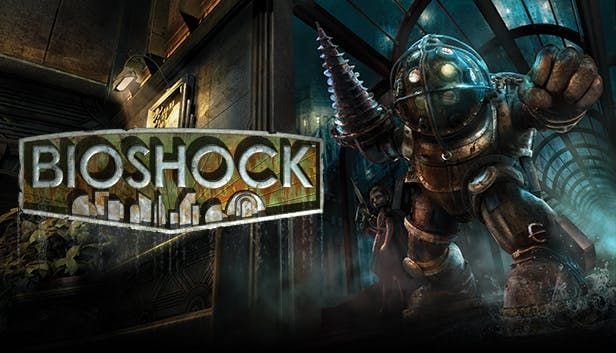
The original BioShock released in 2007, over a decade ago, but has aged remarkably well considering the 13 years of gaming developments that have happened since. All of the hallmark traits you remember about it are still impressive now, just as they were in 2007. From the moment you descend into Rapture, you’ll be enthralled by the world 2K Games have crafted beneath the Atlantic.
Aspects like the gorgeous, dilapidated art deco aesthetic, the imposing presence of Andrew Ryan and his dream for the city, and the dread wrought by the rumbling of an approaching Big Daddy and his giggling Little Sister all still work marvelously. Rapture is just as somber and as full of lost potential today as it was back during the game’s release.
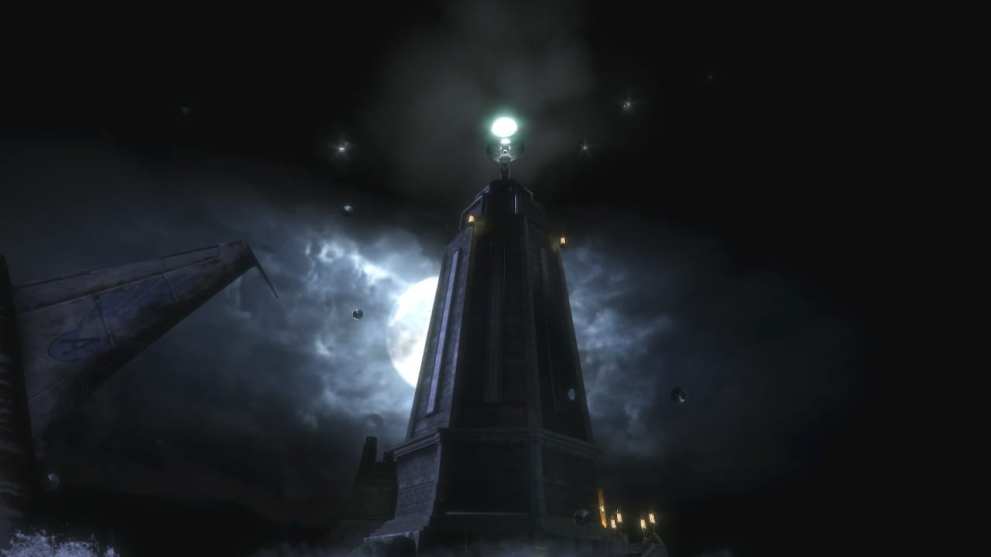
The game’s story holds up incredibly well –a few portions feel rather abrupt in execution, but overall, the interplay between the important characters you meet will keep you engaged the whole way through. It’s very readily apparent as you play through the game’s story beats why this title was considered so groundbreaking at the time, and the legacy it left.
As far as story goes, the choices made with regards to the Little Sisters and their role in ADAM collection might not be as groundbreaking as they were in 2007, but they still make for an interesting mechanic nonetheless. Their models are notably… dated, in this title, but it’s far from the worst thing you’ll see.
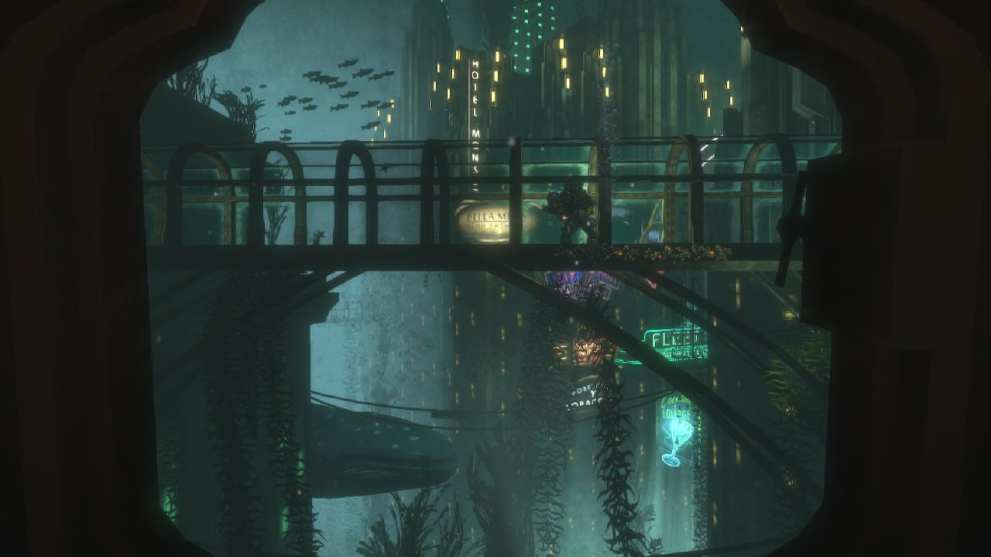
Environmental storytelling is also at its finest in BioShock, with so many small scenes hidden away, arranged just right so the events that took place are made perfectly clear. These are littered throughout the game at every turn –even when there’s not an audio diary nearby, it’s easy to pick up on just what happened.
The visuals of the game are especially impressive –the Switch port stacks up impressively compared to the PS4 and Xbox One editions of the game, with the lighting and texture work putting the Switch edition on par with its more powerful brethren.
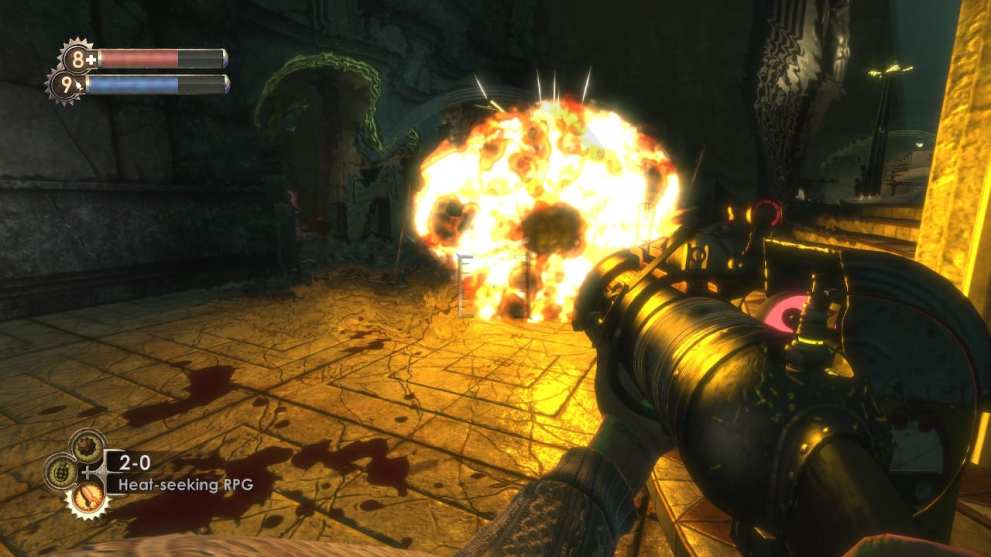
What’s especially impressive is that this is also true of handheld mode –no small feat considering how densely packed this game’s environments can be. The ability to take BioShock on the go without sacrificing performance is an astounding feat, and Blind Squirrel Games deserve some serious kudos for managing to squeeze it all onto the Switch’s handheld screen.
All of BioShock’s original content remains intact –there’s still a wealth of fun-to-use Plasmids and Gene Tonics to track down and collect, and Audio Diaries are littered throughout Rapture’s halls. A new collectible also makes its debut in The Collection’s version of BioShock –Golden Film Reels give players access to developer commentaries about each level’s inspiration and design philosophy.
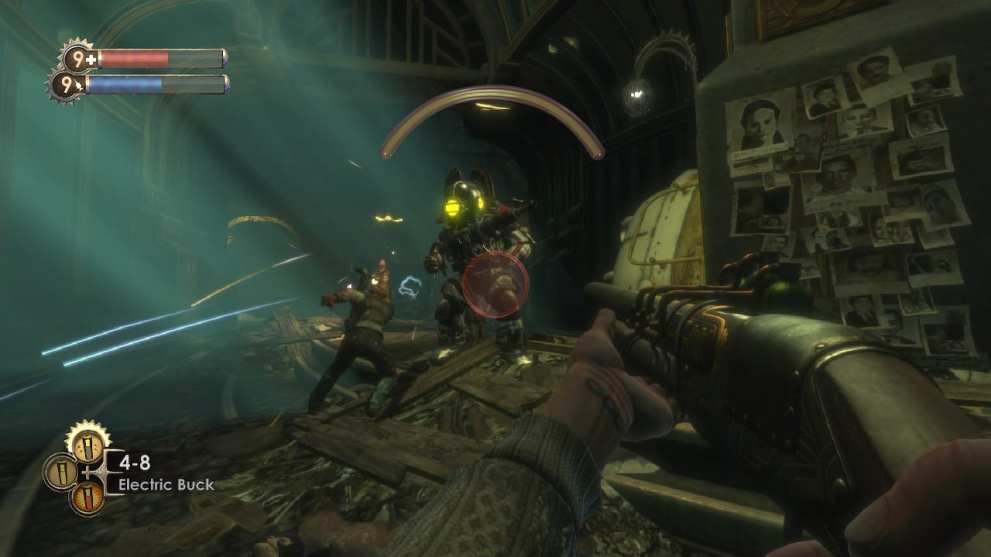
Combat in BioShock still feels fun and effective, even if aspects are a bit dated compared to its sequels. Plasmids are for the most part fun and satisfying to use, though a few, like Security Bullseye and Enrage, feel rather underwhelming compared to Cyclone Trap and the beloved Telekinesis.
The weapon wheel and ammo types give you plenty of ways to spice up your battles, and just-right ammo scarcity means you’ll be using a variety of them without ever feeling like you’re being bled dry. The biggest issue in BioShock’s combat is that Plasmids and weapons can’t be used simultaneously –this makes a certain point in the story much more painful, but it’s never an enormous problem, and is thankfully fixed in the sequels.
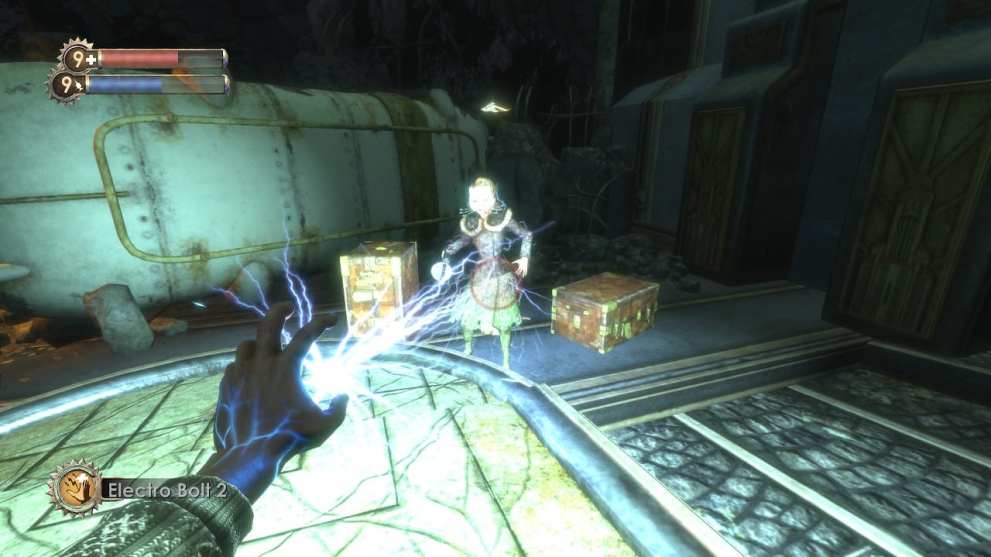
The pipe-based hacking system is still intact here, and while fun at first, it significantly slows down gameplay on a regular basis. While there do exist options to bypass the hacking minigame, they’re usually rare, costly, or hidden behind more tedious aspects of the game. As a result, expect to do a lot of pipe-matching minesweeper if this is your first time.
Overall, BioShock has aged incredibly well for a game with over a decade under its belt. While it does show its age in a few corners, and there are some aspects of its sequels that it sorely wishes it had, it still makes just as much of an impression now as it did back in 2007.
Bioshock 2
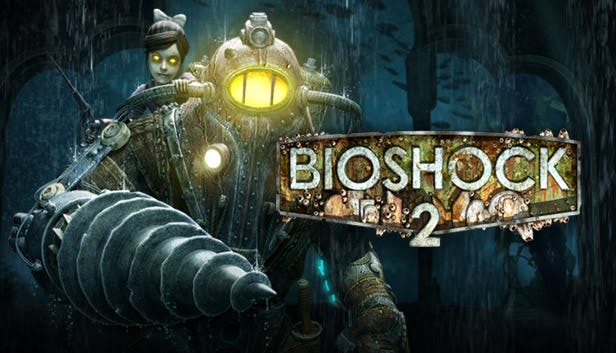
BioShock 2 takes much of the foundation that the original laid and builds upon it, amplifying aspects of the game that were underplayed in the predecessor. BioShock 2 uses its undersea environment to much greater effect, putting players out into the ocean between Rapture’s buildings on a number of occasions, and emphasizing just how fragile an underwater city would be.
BioShock 2 also keeps up the first game’s gorgeous art deco design, but the set-pieces are notably less impressive. While Sofia Lamb’s cultish Rapture Family imagery, and areas like the Journey to the Surface ride are neat, it’s not nearly as intimidating as the first game’s enormous, leering statue of Andrew Ryan, or as unsettling as the nature of Sander Cohen’s art.

Graphically, BioShock 2 is every bit as impressive as its predecessor on Switch, maintaining incredible fidelity, a smooth framerate, and impressive lighting, whether docked or undocked. It’s a true marvel that this trio looks as good as it does when in your hands.
Combat, on the other hand, ups the ante in more ways than one. Plasmids and Weapons can now be used in tandem without requiring players to swap between them, and both are much more versatile in use as a result. Certain Plasmids can now be combined together for unique effects, and weapon ammo types have a greater diversity in use.

BioShock 2’s story continues the themes of the first, exploring what happens as a result of the power vacuum that occurs during the events of the prior title. While interesting on its own, it lacks the highs and exceptional moments that make the original BioShock so special, it makes for a satisfying successor in many ways.
Little Sisters keep their role intact for the most part from the original, but with a new element associated with them. In the original, ADAM collection was immediate, but here, players have to defend a Little Sister from splicers as she draws the ADAM from corpses scattered throughout the stage.
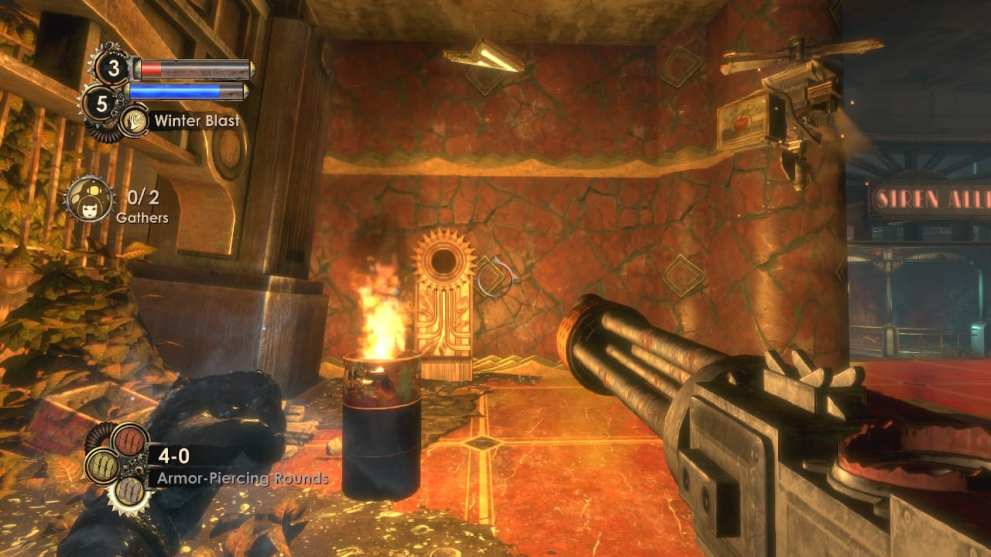
This psuedo tower defense gameplay is clearly inspired by a specific section of the original game, but is now stretched across the entire campaign, and it all becomes tedious rather quickly. It is, however, the most cost-effective method to collect the precious resource that is ADAM, so if you want to get the most out of the game, you’ll be doing it multiple times per level.
Hacking’s prominence is downplayed, and features a new system that eschews the pipes of the original, but not without introducing its own flaws. Players must now time a bouncing needle’s movements in order to stop it at the right time, but unlike the original’s method, this version doesn’t pause the game, leaving you wide open to attack while hacking.
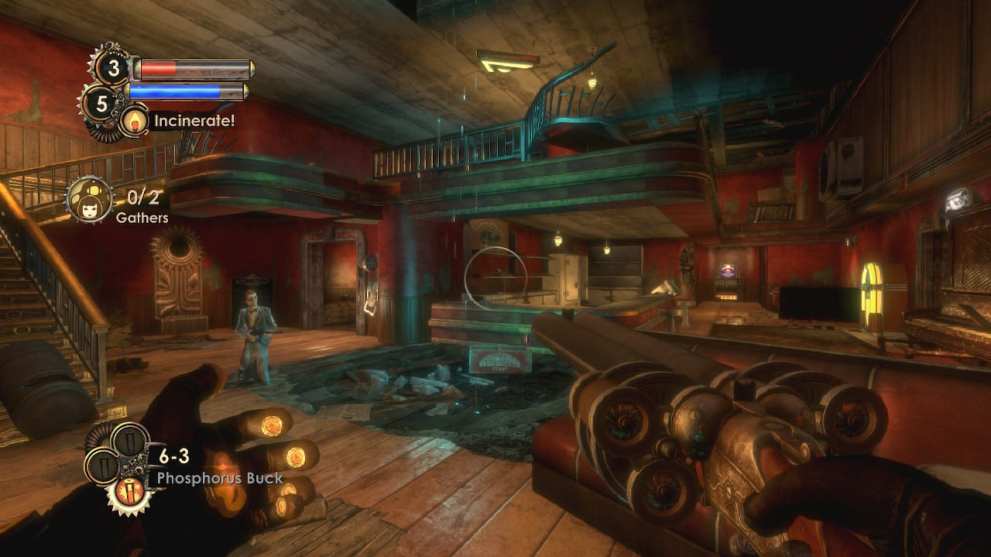
The collectibles and bonus content remain for the most part, with even more collectible Plasmids and Audio Recordings than before. Unfortunately, there are no equivalents to the Director Commentaries, and the lack of the original release’s fun multiplayer mode hurts the title significantly, but it’s more than made up for with the inclusion of Minerva’s Den, a completely separate mini-campaign.
Originally, Minerva’s Den was paid DLC for BioShock 2, but in The Collection, it’s included as part of the package, adding that much more value to the deal. This shorter, separate story follows a different set of characters during the same events that occur during the main game, and is set in areas of Rapture that went unexplored in the main campaign.
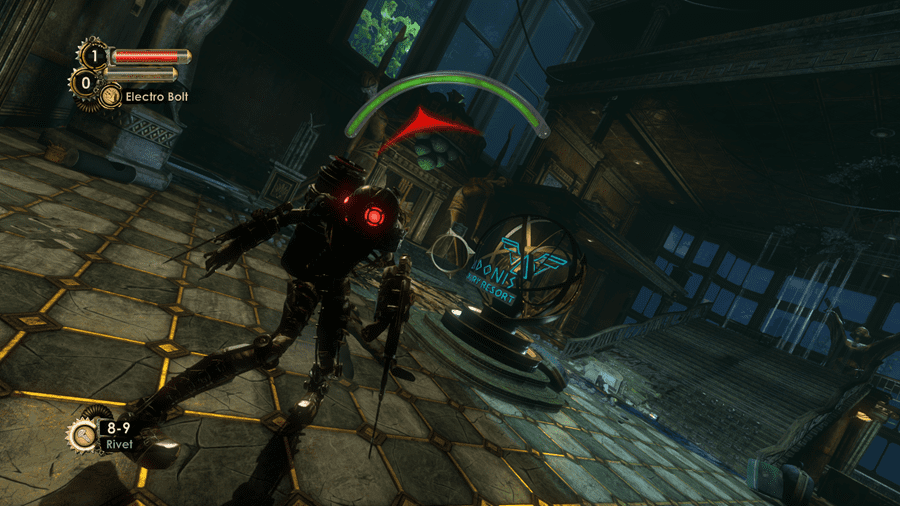
BioShock 2 feels like a refined version of the original, touching up a few rough edges, while not straying too far from what made it great. It might not reinvent the drill, nor does it quite hit the same high notes as its predecessor, but it’s a worthy follow-up all the same.
Bioshock: Infinite
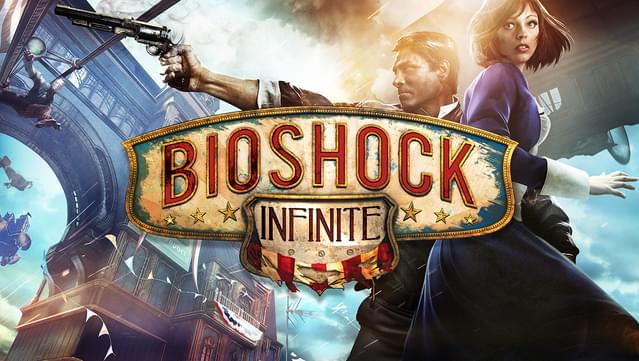
Once you’re finished with Rapture, however, Columbia is ready to welcome you with open arms in BioShock: Infinite. The third game in the series throws out many of the conventions of the prior games and sends them to Columbia, a city high above the clouds instead of below the waves. The changes made here though, are a pretty mixed bag of pros and cons.
The story of BioShock: Infinite is much more complex than that of the original two, partially due to the player character’s increased level of involvement, and partially due to this game’s much more cinematic nature overall. Gone are the damp, claustrophobic corners of Rapture, replaced by Columbia’s grander, open air spaces.
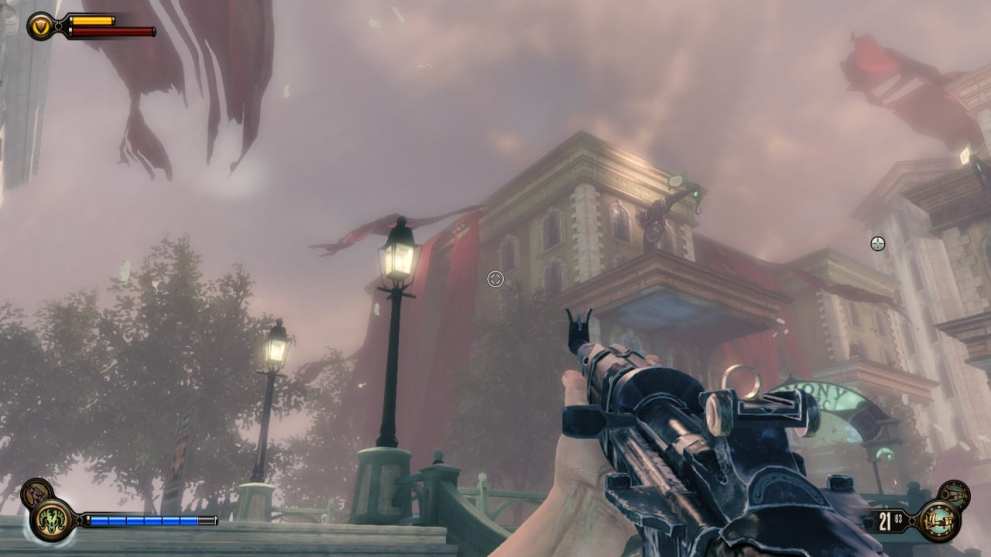
Whereas the original two games featured mute player characters, Infinite’s Booker DeWitt is a veritable chatterbox by comparison, commenting on the events of the game, and conversing with his adventuring partner and ally Elizabeth regularly. Players lose a bit of self-immersion, but gain a deeper investment in the story as a result.
Elizabeth, in many ways, is truly the star of the show, and is decidedly the focal point of the story. She acts as an AI-controlled ally to Booker who assists him in combat with her unique abilities, whilst also helping him with other aspects of their adventure, such as lockpicking and transportation. Mercifully, she’s self-sufficient when it comes to firefights and combat –an escort mission this is not.

While the new setting of Columbia is an interesting new attempt separate from Rapture, it loses a bit of its charm due to the new airborne setting. There are plenty of places where it’s easy to forget that you’re in a city above the clouds in Infinite. Part of this is due to the more impressive (and more intact) architecture present, but it loses a bit of character in turn.
Infinite has areas like the Hall of Heroes or the Arcade, where the altitude of the setting could easily be ignored without altering much. By comparison, in the first two games, even in the most enclosed of spaces, pools of leaking water or windows to the outdoors constantly reminded you of how deep you always were. It’s an unfortunate choice that loses a little bit of what made those first two games really special.
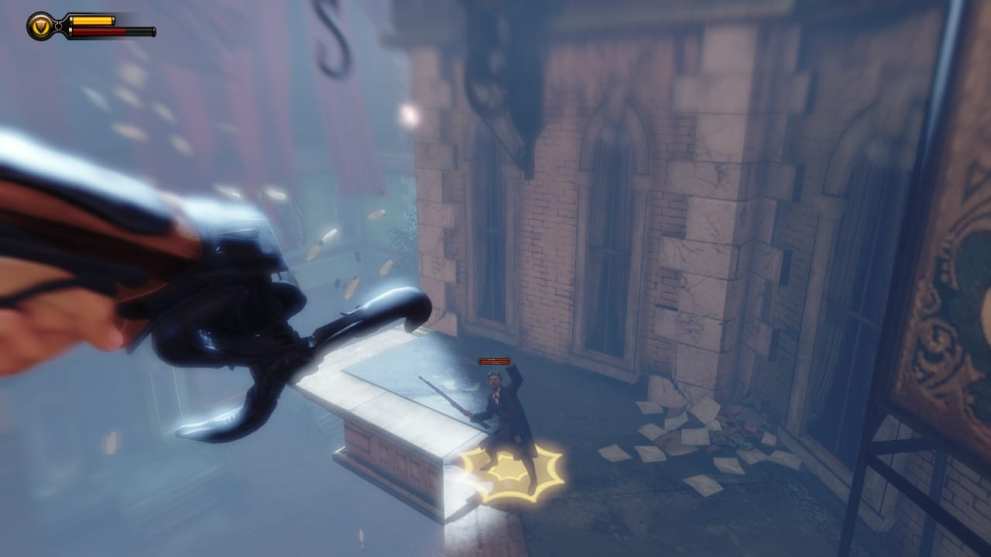
Another give-and-take aspect of BioShock: Infinite is its combat. The skyhook allows for much more mobility during fights, letting Booker leap to skyrails and hanging metal hooks, making battles much more vertical, movement based, and dynamic.
On the other hand, Infinite does away with the much-beloved weapon wheel, taking a more traditional FPS approach by limiting Booker to two weapons at a time versus the eight of the previous games. Also gone are special ammo types, lowering weapon variety further, and depriving players lose of unique gadgets, like tripwires and mini-turrets.
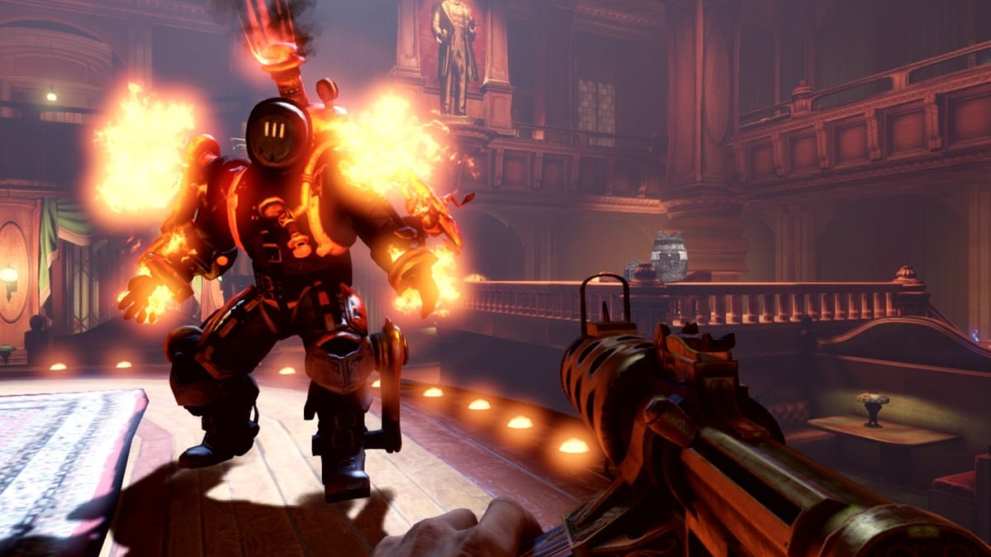
Each weapon feels distinct and effective, each is satisfying to use on a base level, and upgrades can add a bit more bang for your buck. But with much more common ammo providing little reason to swap, it’s all too easy to pick a set of two reliable weapons early on and forego experimentation.
Plasmids, or, as they’re known here, Vigors, have the same issue, with there being only eight of them across the entire game. They’re all useful, and each has secondary functions that gives them more individual versatility than BioShock 1 and 2’s Plasmids, but the limited count makes each player’s setup feel less distinct.
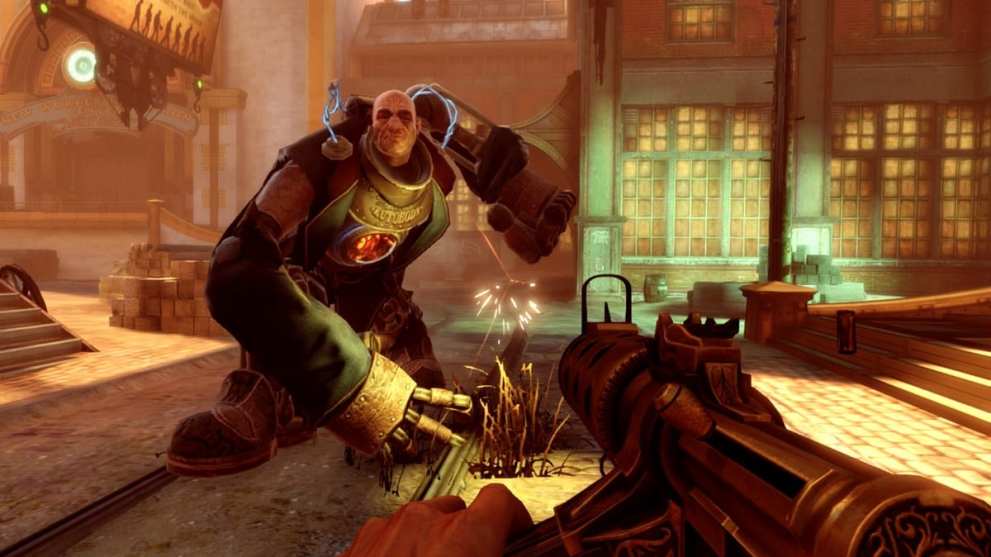
Where BioShock: Infinite truly shines however, is in the scale and spectacle of the story that takes place. Cinematic events and impressive set-pieces are all over Infinite, making the game a much more striking experience to play through. Graphically, the Switch captures these scenes remarkably, once again keeping pace with other current gen iterations of The Collection.
One aspect of Infinite does suffer a bit on Switch, however –menus. The UI in Infinite is smaller as a whole, likely to attempt to be less intrusive than it was in prior titles. The text and icons in some of these menus are incredibly small, though, which normally isn’t a problem when docked and on a television. Handheld mode, is a separate issue altogether.
On the smaller screen, some pieces of menu text can be incredibly hard to read, affecting both subtitles and important game elements like vending machines and gear descriptions. With just how tiny menus are in Infinite to begin with, handheld mode can make them almost illegible without perfect lighting and a bit of eye strain.
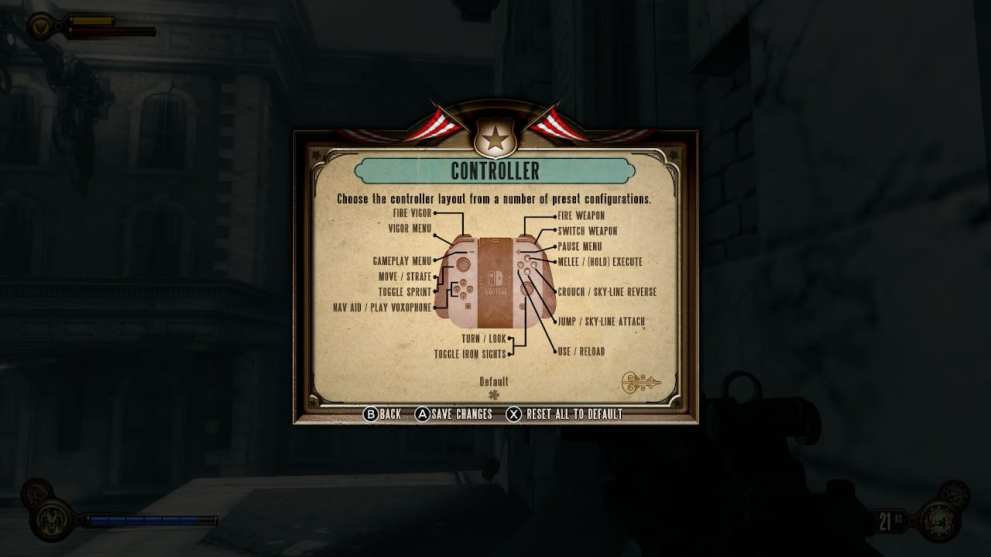
On the upswing, BioShock: The Collection also includes all of the DLC for Infinite, including the Clash in the Clouds challenge maps, as well as the two part additional story DLC, Burial at Sea. The inclusion of this DLC only adds more value to the package; if you loved Infinite, these bits of bonus content give you that much more of it.
As a whole, Infinite trades out a lot of personalization for a more streamlined, cinematic experience. In many ways, it works great –the story is incredibly engaging, and the locales are grander than they’ve ever been. But on the flipside, a lot of the gameplay variety has been smoothed out as well, in some cases for the better, and in some cases for the worse.
Control Scheme Woes
As we come towards the end of this review, we need to cover one of the biggest problems facing Bioshock: The Collection –one that hangs over the compilation as a whole. On its own, it’s a minor issue, but for a compilation title like this, it’s much more significant –inconsistent controls.
Each of the three games has its own default control scheme with a completely different button layout to the other games. Played separately, you could probably get used to each of the different control schemes without much trouble. Played sequentially, however, which is very likely in a collection like this, and you’re going to be making muscle memory mistakes a lot.
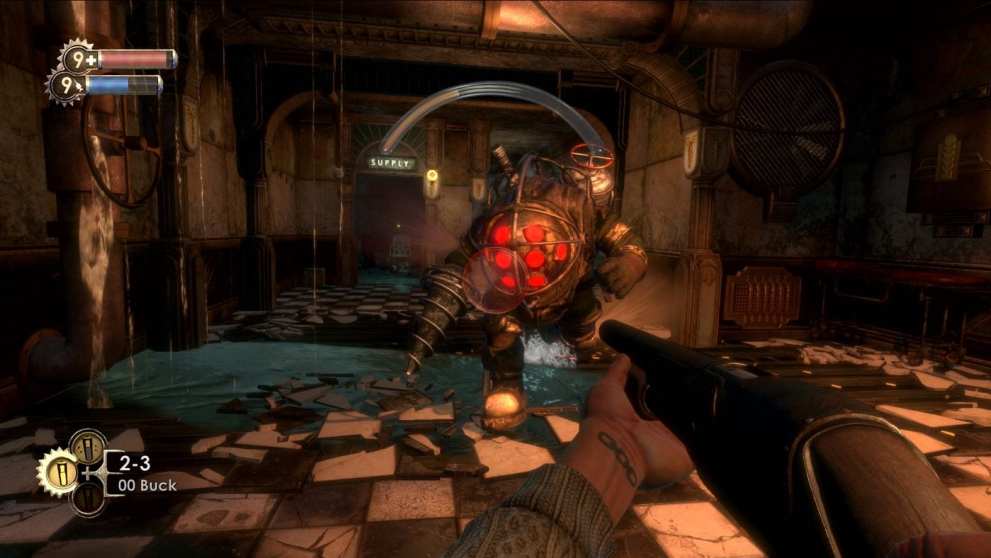
The original BioShock is the worst offender in this regard. For some strange reason, the controls for jump and heal are very oddly placed, with healing mapped to the B button, and jump mapped to the X button, which is pretty much the reverse of what you’d expect.
As someone who’s used to just about every other game putting jump on A or B, this meant that I ended up wasting medkits on accident regularly by attempting to jump. What’s even worse is that there are no alternate control scheme options in BioShock 1, locking you into this odd layout. In the end I just had to set custom controls in my Switch menu to avoid that issue, by manually swapping B and X there.
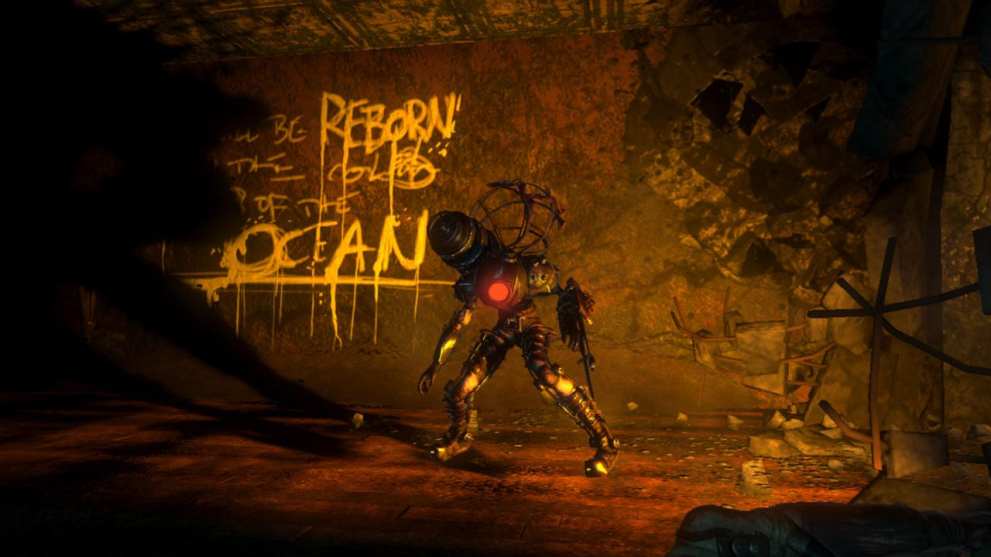
BioShock 2 has a much more rational layout for jumping and healing, putting jump on B, and moving heal to the d-pad. Otherwise, it keeps most controls intact, but if you’d gotten used to the original’s layout, you’ll find yourself making mistakes again here. There are custom control options here, thankfully, but they’re preset, only changing which sticks are for move and look, and which shoulders buttons are fire and weapon/Plasmid swap.
BioShock: Infinite then completely jumbles all of these controls around, moving around your interaction buttons, your reload button, crouch, melee, and more. There is a control scheme that rearranges things to be closer to the original two, but even then, it’s slightly off, so expect to make a lot of mistakes when you get started in Infinite.
Bioshock: The Collection

All in all, BioShock: The Collection is an incredible package deal. It encompasses three high-quality games that, despite each having a handful of issues, are all incredible examples of what the FPS genre can accomplish. Incredible, engaging stories, chock full of jaw-dropping reveals, imaginative worlds and scenery, and larger-than-life, while still all too real, characters.
Despite the fact that you’ll likely struggle with control confusion from game to game, each title is more than worth your time. If you’re a fan of unique environments and compelling storytelling that uses the medium to its advantage, then BioShock: The Collection is probably the right call for you.
Pros
Cons
Removal of BioShock 2’s multiplayer mode.
Infinite’s menus are very difficult to read in handheld mode.
